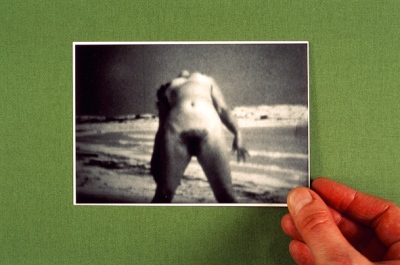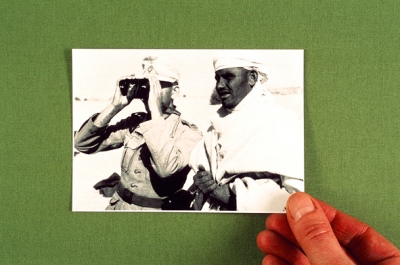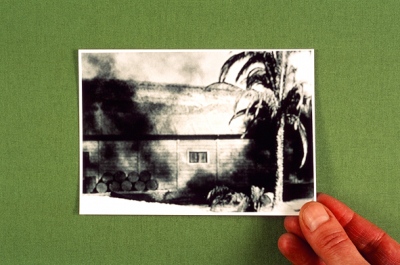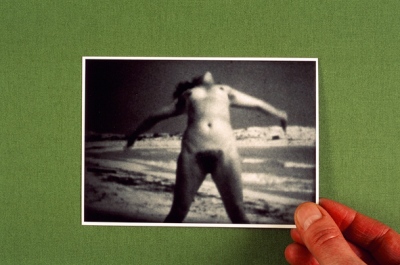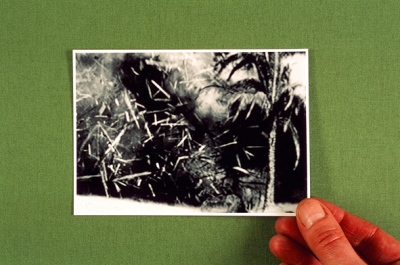-
Positions at El Alamein 80 colour slides, 2012
Naturist Beach at El Alamein was the description on some slides in a set of transparencies that Tatiana Lecomte rescued from a wastepaper container some 20 years ago. 40 years of life shared by a couple are captured in hundreds of slides and Super-8 film recordings which for the most part show them leading everyday lives within their own four walls, or in hotel rooms or at the beach where the wife is always shown in poses ranging from erotic to pornographic – as at the naturist beach at El Alamein in the 1960s. Looking back in time, we see that a few years earlier El Alamein had been the scene of events of quite a different nature: in 1942, allied forces under British command defeated German and Italian troops there in two decisive battles, causing Axis forces to begin their gradual withdrawal from North Africa. German hopes of reaching the strategically important Suez Canal disappeared over the horizon.
Image by image, Tatiana Lecomte reveals her montage of the positions taken at El Alamein. The photographs come from histories and films based on both battles; from the couple’s private collection; from a specially purchased series of slides from the 1970s; and from the artist’s record of her own visit to its beaches. Momentous events in history and insignificant events in history are juxtaposed: the great story of World War II with its air raids, heavy shelling, tanks deployed on the beaches, soldiers injured and killed sits alongside the personal and trivial story of one man whose wife posed naked for the camera at El Alamein and who possibly fought there himself. Ultimately, it’s always the backs of individuals that bear the stamp of great history.
By giving images from such diverse sources an identical background, Tatiana Lecomte creates a sequence that through comparisons and analogies not only turns into a narrative, but also develops into a consideration of photographic and film material: Reproductions of original photographs made by war photographers; freeze-frame images of period movies; slides taken from super-8 film; the artist’s own photographs and the sole colour image - a slide of a trip to Egypt found elsewhere - all challenge viewers to identify the source of the images on the basis of their quality – whether grainy or banded.
As in Jean-Luc Godard‘s Les Carabiniers, the images become a form of evidence that is authenticated by the commentator’s hand laying them out before us one after the other. This method of presenting them appears to evolve from the sequence of images where again and again a hand also appears: the hand marking a map with flags in preparation for an attack; the hand showing the photograph of a young boy; or the hand of the soldier holding the camera.
Ruth Horak Translation: Stephen Telfer
